Digital Poster
Diffusion Acquisition & Reconstruction
ISMRM & ISMRT Annual Meeting & Exhibition • 10-15 May 2025 • Honolulu, Hawai'i

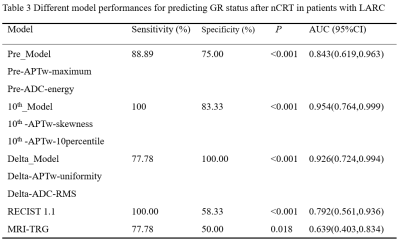 |
Computer Number: 97
4064. APT-Weighted
Imaging and ADC Histogram Analysis for Predicting Response to
Neoadjuvant Chemoradiation Locally Advanced Rectal Cancer
Y. du, g. Huang, k. ai, y. he, w. xu
The First Clinical Medical College of Gansu University of Chinese Medicine, lanzhou, China
Impact: The histogram characteristics and characteristic
change of the APTw and ADC of pre- and mid treatment can
non-invasively and predict the treatment response of LARC
patients undergoing nCRT, providing a novel quantitative
assessment method for evaluating treatment response.
|
|
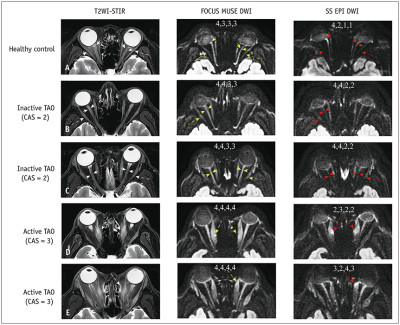 |
Computer Number: 98
4065. Prospective
Comparison of FOCUS MUSE and Single-Shot EPI DWI in Evaluating
Thyroid-Associated Ophthalmopathy
Y. Wang, J. Dai, Q. Wen, Y. Xiao
Department of Radiology, Second Affiliated Hospital of Naval Medical University, shanghai, China
Impact: The treatment selection of TAO depends on its
activity. FOCUS MUSE DWI exhibited significantly improved
performance in the assessment of TAO staging. Therefore, the
application of FOCUS MUSE DWI would be beneficial for
treatment selection of TAO.
|
|
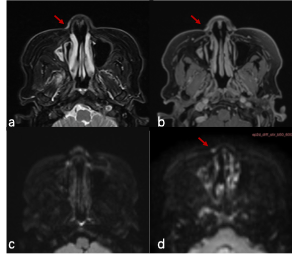 |
Computer Number: 99
4066. The
robust advantage of 0.55 Tesla MRI on malignant skin tumor
diffusion-weighted imaging compared with 1.5 Tesla MRI
K. Xu, J. Qiu, H. Li, W. Li, J. Zhu, X. Wang, K. Zhou, X.
Wang
Peking University First Hospital, Beijing, China
Impact: Compared with 1.5T DWI, 0.55T DWI has great
potential in decreasing artifacts and distortion of skin
tumor DWI images by reducing the magnetic field
nonuniformity caused by the interface between air and soft
tissue.
|
|
 |
Computer Number: 100
4067. Diffusion
Imaging of Supraspinatus Tendon Using a UTE-Based DW-SSFP
Sequence
K-J Jung
University of Illinois Urbana-Champaign, Urbana, United States
Impact: The muscular tendon of short T2 can be studied
using diffusion imaging with a detectible sensitivity for
the 3-D volume in 5 min. The DW-SSFP sequence can replace
the conventional 2-D EPI diffusion imaging sequence in
muscular tendon diffusion imaging.
|
|
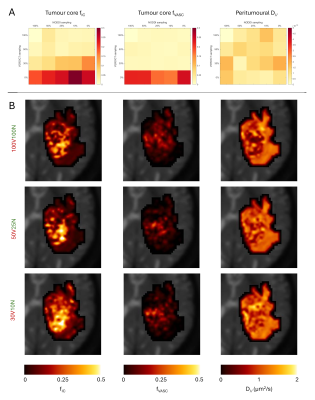 |
Computer Number: 101
4068. Towards
a clinical acquisition protocol for VERDICT MRI in brain tumours
M. Figini, M. Palombo, M. Bailo, D. Alexander, M.
Cercignani, A. Castellano, E. Panagiotaki
University College London, London, United Kingdom
Impact: We have shown that VERDICT-MRI brain tumour
microstructure metrics can be estimated from substantially
reduced acquisition protocols than in previous publications
while maintaining the capability to differentiate tumour
types. This is crucial for the clinical translation of this
technique.
|
|
 |
Computer Number: 102
4069. Diffusion
MRI acquisition methods for post-mortem imaging on a 10.5 T
whole-body human MRI scanner
B. Tendler, S. Warrington, M. K. Selim, W. Wu, G. Adriany,
E. Auerbach, A. Bratch, H. Farooq, N. Harel, S. Heilbronner,
S. Jbabdi, S. Jungst, C. Lenglet, S. Moeller, F. Pestilli,
P. Pisharady, K. Ugurbil, M. Waks, E. Yacoub, S.
Sotiropoulos, K. Miller, J. Zimmermann
University of Oxford, Oxford, United Kingdom
Impact:
This research investigates acquisition methods to obtain high-quality post-mortem diffusion MRI datasets using a 10.5 T whole-body human MRI scanner. Data acquired using the described methodology provide detailed neuroanatomical information, informing future brain connectivity and in vivo investigations. |
|
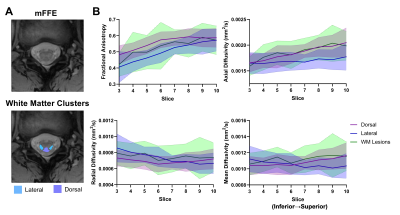 |
Computer Number: 103
4070. Multi-shot
EPI diffusion tensor imaging of the human lumbar spinal cord is
sensitive to microstructural tissue changes in multiple
sclerosis
A. Cronin, L. Narisetti, G. Sweeney, K. Schilling, S.
Stubblefield, C. McKnight, R. Robison, F. Bagnato, S.
Sriram, S. Smith, K. O'Grady
Vanderbilt University Medical Center, Nashville, United States
Impact: Evaluation of multi-shot, reduced field-of-view,
2D-navigated DTI of the lumbar spinal cord of healthy
volunteers and multiple sclerosis patients provides a unique
way to study tissue heterogeneity, and identifying specific
lesion locations is necessary to evaluate disease-related
damage.
|
|
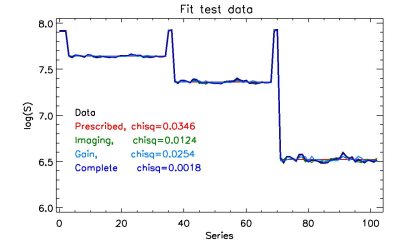 |
Computer Number: 104
4071. Estimate
the effects of imaging gradients and gradient miscalibration on
the b-matrix using an isotropic diffusion phantom
R. Dong, A. Barnett, J. Derbyshire, C. Pierpaoli
National Institutes of Health, Bethesda, United States
Impact:
Our method can be used to account for the effects of imaging gradients and gradient miscalibration on different scanners and sites and should help harmonizing multi-site diffusion MRI data. |
|
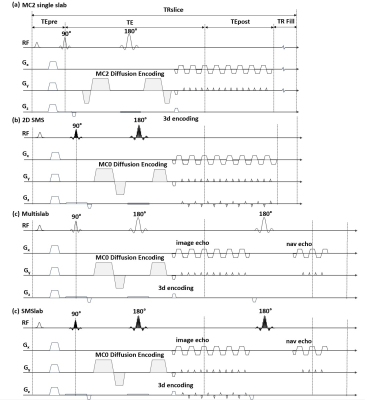 |
Computer Number: 105
4072. Simulated
Analysis of SNR and SNR efficiency in motion compensated
single-slab DWI, multislab, SMSlab and 2D SMS EPI Techniques
W. Zhong, Y. Jiang, H. Guo
Tsinghua University, Beijing, China
Impact:
This research provides valuable insights into the
efficiency of motion-compensated single-slab DWI compared to
conventional techniques, guiding future 3D DWI developments
in diffusion imaging.
|
|
 |
Computer Number: 106
4073. Optimized
Maxwell Compensation in Asymmetric Diffusion Encoding Gradient
Waveform Design for Tensor‐Valued Diffusion Encoding
E. Dai, G. Wang, G. Wu, J. McNab
Stanford University, Stanford, United States
Impact: A
new estimation model of the Maxwell term has been proposed
to better compensate for the concomitant gradients in the
final asymmetric diffusion encoding gradient waveform, which
is promising to further improve the accuracy of diffusion
measures.
|
|
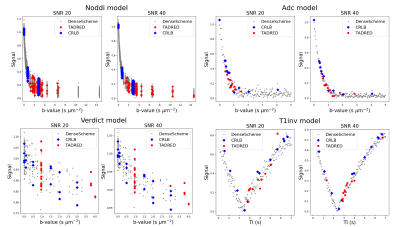 |
Computer Number: 107
4074. Deep
Learning Experimental Design for Quantitative Parameter Mapping
P. Slator, S. Blumberg, H. Lin, O. Slumbers, D. Ravi, Y.
Zhou, E. Powell, M. Figini, D. Alexander
Cardiff University, Cardiff, United Kingdom
Impact:
TADRED enables shorter, more efficient diffusion and quantitative MRI protocols. This can reduce scan time and costs, reduce motion artifacts, and enhance patient comfort. |
|
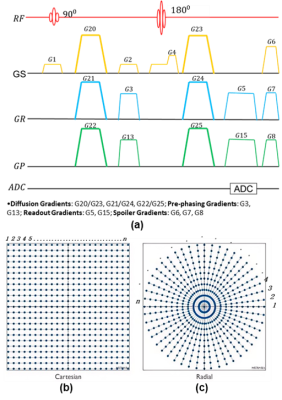 |
Computer Number: 108
4075. Optimization
of Radial Diffusion Imaging on a 0.16T Low-Field MRI
X. Dong, j. Lyu, B. Zhang, Q. Liu, R. Hou, C. Chen, H. Wang,
D. Liang, Y. Zhou
Research Center for Medical AI, Shenzhen Institute of Advanced Technology, Chinese Academy of Sciences, ShenZhen, China
Impact: This work could expand low-field MRI
applications, facilitating access to reliable diffusion
imaging in primary care settings. Further validation across
varied populations may support its broader adoption in
resource-limited healthcare environments.
|
|
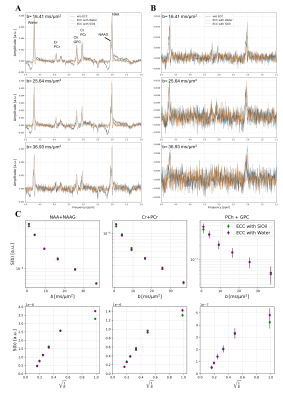 |
Computer Number: 109
4076. Correction
of time-dependent phase fluctuations in diffusion-weighted MRS
at high b-values with external phantom reference
K. Engel, V. Wiggermann, I. Ronen, H. Lundell
Copenhagen University Hospital - Amager and Hvidovre, Copenhagen, Denmark
Impact: This research can help improve dMRS data quality
at high b-values by correcting signal distortions with a
phantom reference scan. This reduces scanning time in human
studies and makes dMRS more practical for clinical use.
|
|
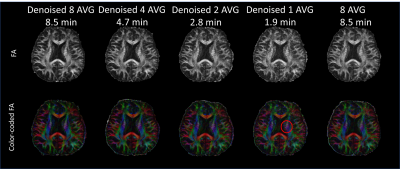 |
Computer Number: 110
4077. Rapid
Mesoscopic Resolution DTI with High-Performance 7T
Y-H Tung, H. Mattern, O. Speck
Otto-von-Guericke-Universität Magdeburg, Magdeburg, Germany
Impact: Fast and high-quality DTI with mesoscopic
in-plane resolution (0.5 mm) is possible on a
high-performance human 7T scanner within 3 minutes. The
protocol can screen the entire brain swiftly for
pathological tissues.
|
|
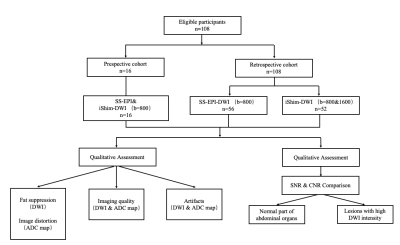 |
Computer Number: 111
4078. Application
of Integrated Slice-Specific Dynamic Shimming Diffusion Weighted
Imaging (DWI) in MRCP
Y. Zhang, W. Li, N. Qin, J. Qiu, J. Liu
Peking University First Hospital, Beijing, China
Impact: This study is one of the first to report
the worth application of iShim-DWI(b=800 s/mm2) in upper
abdomen, which could improve the lesion detection, and might
be a better choice for ultra-high b value in upper abdomen
in future study.
|
|
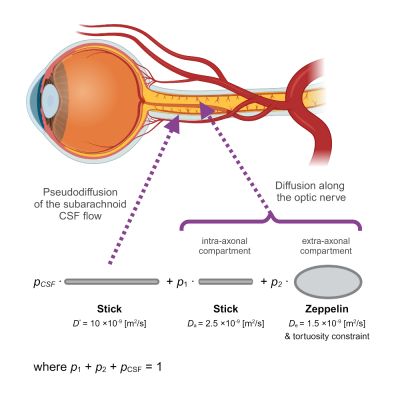 |
Computer Number: 112
4079. Diffusion
MRI model of optic nerve microstructure in glaucoma patients
P. Filipiak, L. Ma, V. Dedania, K. Chan, S. Baete
Bernard and Irene Schwartz Center for Biomedical Imaging, Department of Radiology, NYU Langone Health, New York, United States
Impact:
Vision loss due to glaucoma is preventable if diagnosed early. Our approach has the potential to identify glaucomatous changes in patients undergoing diffusion MRI exam and thus support timely and targeted treatment. |
The International Society for Magnetic Resonance in Medicine is accredited by the Accreditation Council for Continuing Medical Education to provide continuing medical education for physicians.